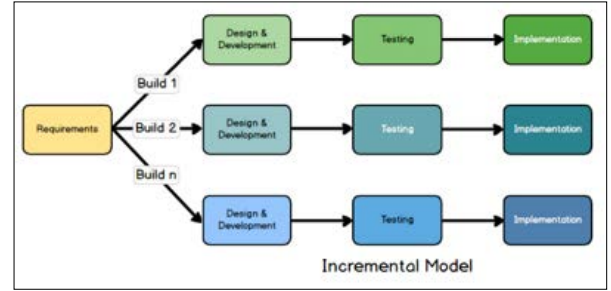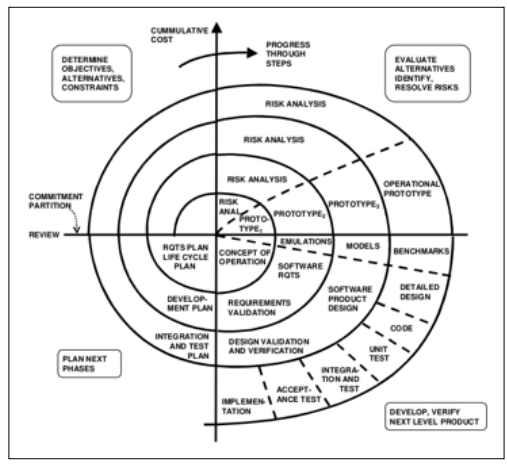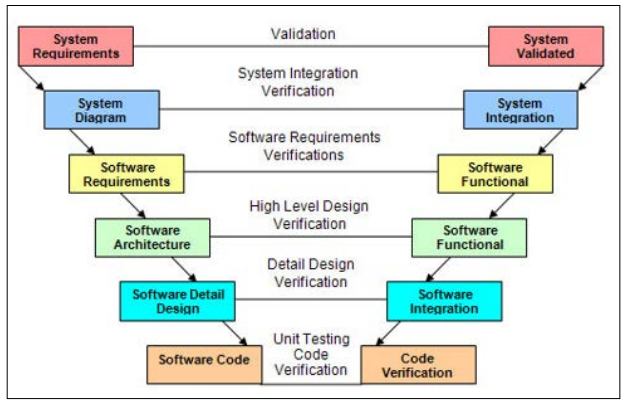Author(s): Kodanda Rami Reddy Manukonda
This abstract provides a thorough examination of the critical function of exploratory testing in the framework of Agile software development approaches, drawing conclusions from a careful examination of case studies. Agile approaches have become a top framework for encouraging adaptability, cooperation, and continuous improvement in response to the software development processes' ever-increasing complexity and quick evolution. In such a dynamic environment, exploratory testing is a vital tool that helps teams discover bugs, iteratively explore software features, and improve testing methods. This paper clarifies the complex interactions between exploratory testing and Agile principles, illuminating their effects on project outcomes, team dynamics, and product quality through a thorough analysis of several case studies taken from various industry contexts. This study offers useful insights and suggestions for improving testing procedures and streamlining software development processes by combining empirical data and theoretical frameworks to better understand how exploratory testing can be successfully integrated into Agile environments. Finally, this study emphasises the importance of exploratory testing as a fundamental component of Agile approaches and argues for the deliberate application of this practice to promote innovation, flexibility, and quality control in contemporary software development projects.
Agile software development strategies, which offer an alternative to conventional, inflexible approaches like the Waterfall model, have completely changed the way software is developed and managed [1]. Agile values place a high value on flexibility, teamwork, and the quick delivery of usable product. Agile testing, a thorough method that aligns testing procedures with Agile concepts, is essential to the Agile spirit [2].
Agile testing originated from an understanding of the limitations of traditional testing approaches. Conventional methods frequently resulted in long release cycles, postponed feedback, and skyrocketing project expenses. Agile testing solves these issues by smoothly incorporating testing into the entire process of developing software [3]. It places a strong emphasis on early fault identification, continuous integration, and cooperation between developers and testers. Test-Driven Development (TDD), Behaviour-Driven Development (BDD), Acceptance Test-Driven Development (ATDD), and Exploratory Testing are noteworthy examples of Agile testing approaches. These approaches seek to reduce development costs and improve software quality [4].
Conventional software testing approaches usually follow a phase-by-phase, linear framework, with testing taking place after development [5]. This method frequently leads to increased costs and delayed feedback since it requires a lot of reworks when late- stage defects are discovered. In sharp contrast, the focus of agile testing is on integrating testing activities into the development process [6]. This improves overall software quality by encouraging early fault identification and resolution, facilitating developer and tester collaboration. The goal of this study is to examine the subtleties of Agile testing approaches, how they affect software quality, and how much adopting them will cost [7].
The process of developing software is complex and starts with requirement analysis and ends with software deployment and maintenance. A number of software development lifecycle (SDLC) models, such as the Waterfall model, Prototype SDLC, Iterative/ Incremental SDLC, Spiral SDLC, and V-SDLC, have been put out to help direct these initiatives [8]. Although these conventional SDLCs have advantages, they are frequently criticised for taking a long time and requiring a lot of documentation. Agile SDLC stands out as a strong substitute, offering increased effectiveness and adaptability [9]. Through a thorough case study analysis, this paper seeks to investigate the function of exploratory testing within Agile software development [10].
Sandeep et.al provides a contribution to this body of knowledge by presenting an exploratory study that focuses on effort estimation in agile software development. They offer insights from the viewpoints of practitioners. This study provides light on the challenges and solutions connected with estimating effort in environments that are dynamic and iterative in nature. It also highlights the need of taking contextual elements into consideration and employing empirical data in order to achieve more accurate calculations [11].
Islam and Storer propose a case study that investigates the use of agile software development approaches in the context of projects involving safety-critical systems. The purpose of this study is to investigate the specific difficulties and factors that are involved in the process of developing software for safety-critical domains within an agile framework. The research also highlights the importance of modifying methods in order to guarantee both agility and dependability in instances like these. In order to give practitioners with useful insights that will assist them in negotiating the confluence of agility and safety-critical requirements, this study documents experiences and lessons learned from projects that were carried out in the real world [12].
By performing an exploratory multiple case study on software development estimating methodologies in industrial environments, provide a contribution to the existing body of research. This research provides a comprehensive understanding of the elements that influence estimating accuracy by investigating several estimation methodologies that are utilised by software development organisations. These aspects include the size of the project, the complexity of the project, and the experience of the team. For the purpose of improving project planning and decision-making, the findings highlight how important it is to pick proper estimation approaches and to continuously refine estimation processes [13].
Copche, et al. investigate the concept of exploratory testing of mobile applications. The findings of this study present a novel approach to directing exploratory testing efforts through the utilisation of opportunity maps. These maps are a visual representation of locations inside an application that may provide both potential interest and danger. This technique seeks to improve the effectiveness and efficiency of exploratory testing efforts, particularly in the context of mobile and online apps, by combining systematic exploration with visual representation. Specifically, the goal is to improve the effectiveness of exploratory testing [14].
Ashmore et.al (2018) present an exploratory assessment of modes of interaction and work in waterfall and agile teams. The purpose of this study is to provide insights into the ways in which the dynamics of teams and the patterns of collaboration change between these two methods to project management. This study sheds light on the intricacies of working in waterfall environments as opposed to agile environments by comparing and contrasting communication styles, decision-making processes, and team structures. It also underscores the significance that these differences have for the success of projects and the performance of teams [15].
The Software Development Life Cycle (SDLC) is the overall system that coordinates the plan, development, and testing deliberately works with regards to looking at the capability of exploratory testing in Agile software development through a contextual investigation examination. Its objective is as yet unchanged: give incredible software that meets or surpasses client assumptions while remaining inside monetary and plan limitations. This approach is upgraded by the joining of exploratory testing into Agile procedures, which advance adaptability, cooperation, and continuous development. This in the end further develops the software's quality and responsiveness to changing requirements.
The Waterfall Model is used as a historical point of reference for conventional software development approaches in the examination of the function of exploratory testing in Agile software development. When it was first developed, the process model followed a linear, sequential approach, with no overlap between stages and each phase ending before the next one started. The stages consist of:

Figure 1: Waterfall Model
The study of exploratory testing's place in Agile software development highlights how the iterative life cycle model differs significantly from more conventional, inflexible approaches. In contrast to methods like the Waterfall Model, an iterative model does not require a thorough explanation of requirements up front. Rather, only a subset of the software is defined and implemented at first, and it is then assessed to determine what more is needed. Every iteration of this cyclically repeated iterative process produces a new version of the software. This iterative process fits in perfectly with the Agile software development tenets of flexibility, teamwork, and ongoing development. A key component of this methodology is exploratory testing, a dynamic and adaptive testing method. Iteratively exploring the developing software, testers find bugs and improve requirements as the programme develops. Agile teams are better equipped to adapt to shifting consumer demands and market dynamics thanks to this iterative and exploratory methodology, which allows them to produce high-quality software gradually while retaining flexibility and reactivity. Therefore, exploratory testing combined with the iterative life cycle model creates a flexible and powerful foundation for Agile software development.

Figure 2: Iterative SDLC/Incremental SDLC
When examining how exploratory testing fits into Agile software development, the Spiral model sticks out as a flexible methodology that combines sequential and iterative methods while placing a lot of emphasis on risk management. This model develops in four separate stages.

Figure 3: Spiral-SDLC
Identification: The cycle begins with social affair business prerequisites during the standard winding. Nonstop correspondence
The V-Model is a structured framework that extends from the Waterfall model to explore the role of exploratory testing in Agile software development through a case study analysis. It connects testing stages with each appropriate development step. The Coding phase connects the two sides of the "V," with the Verification phases on one side and the Validation phases on the other. The programme is verified to fulfil specifications and requirements through many stages, such as Business Requirement Analysis, System Design, Architectural Design, Module Design, and Coding Phase. These stages are painstakingly organised and carried out, and testing is scheduled concurrently. Unit testing, integration testing, system testing, and acceptance testing are used in validation to ensure that the generated software is compatible and functional. Within an Agile setting, exploratory testing is a dynamic way to find flaws and improve requirements iteratively. It enhances the V-Model. The inclusion of exploratory testing in Agile software development processes emphasises the value of flexibility and ongoing improvement, even while the V-Model provides an organised framework for development and testing. This blend of approaches encourages adaptability and reactivity, enabling teams to gradually produce high-quality software while addressing changing requirements.

Figure 4: V-SDLC
Between the client and framework expert guarantees an intensive comprehension of framework necessities. This stage lays the preparation for ensuing development emphasess.
Design: The design phase begins with conceptualizing in the baseline spiral, progressing to architectural design, logical design of modules, and culminating in final design in subsequent spirals. This iterative approach allows for refinement and enhancement of the design based on evolving requirements and feedback.
Construct or Build: The construction phase involves the actual production of the software product at each spiral iteration. In the baseline spiral, a Proof of Concept (POC) is developed to solicit customer feedback while the design is still evolving. This iterative construction process facilitates early validation and refinement of the product.
Evaluation and Risk Analysis: The final phase encompasses evaluation and risk analysis. Risk analysis involves identifying, estimating, and monitoring technical feasibility and management risks, such as schedule slippage and cost overrun. After testing the build, the customer evaluates the software and provides feedback, guiding further iterations and risk mitigation strategies.
The core tenets and ideals of the Agile methodology are essential to understanding the function of exploratory testing in Agile software development through a case study examination. Agile software development is a process that prioritises practicality and flexibility. Rather than waiting until the project is finished, functional portions of the application are delivered as soon as they are available. This method, sometimes referred to as the incremental model, comprises creating software quickly and incrementally. Each release builds on the capability of the preceding one and is rigorously tested to ensure that the software remains of a high calibre. One well-known use of the Agile development life cycle model that emphasises iterative development and ongoing feedback is Extreme Programming (XP).
Twelve guiding principles and four primary values are outlined in the Agile Manifesto, which was created in 2001 by seventeen practitioners to promote agile software development. These ideals put people and relationships ahead of procedures and equipment, functional software ahead of thorough documentation, customer cooperation ahead of contract negotiations, and adapting to change instead of sticking to a schedule. Agile approach is based on a number of core principles, including the quick delivery of useful software, acceptance of changing requirements, frequent release of functional software, strong communication between business and developers, and ongoing focus on high-quality technical design and development.
By embracing changing needs, delivering working software frequently, fostering tight collaboration between development and business teams, and continuously adapting to changing conditions, the Agile methodology promotes customer satisfaction. The Agile development approach is guided by these principles, which encourage adaptation, flexibility, and responsiveness to customer needs at every stage of the software development life cycle. These ideas are strongly aligned with exploratory testing in an Agile environment, which enables dynamic functionality exploration of the product and iterative requirement refinement to produce high-quality software gradually.
The implementation of agile development concepts and practices appears as vital for various reasons in the case study analytical assessment of the importance of exploratory testing in Agile software development:
Through a case study analysis, the role of exploratory testing in Agile software development is examined. It is found that although Agile methodologies have shown to be highly beneficial in terms of reduced development time, lower costs, and fewer product defects, their use in government and defence projects is still relatively limited. In these ventures, protection from Agile proceeds, regardless of a drop in the utilization of customary development draws near and an expansion in the utilization of Agile across businesses. According to studies, Agile is mostly taken into account for pressing, important programmes with a lot of influence or for failing initiatives that are probably going to be cancelled. Analysing the causes of this resistance and discrimination is crucial in order to address this issue in the future. These causes may include cultural barriers, risk aversion, and regulatory limitations. To overcome opposition and promote Agile adoption in government and defence projects, efforts should concentrate on teaching stakeholders about the advantages of the methodology, creating customised frameworks, and cultivating an atmosphere of openness and innovation.
To sum up, this case study research inquiry into the function of exploratory testing in Agile software development clarifies the dynamic interplay between testing procedures and Agile tenets. Examining real-world examples makes it clear that exploratory testing is essential in Agile settings because it provides flexibility, adaptability, and the capacity to find subtle needs and faults. Because Agile development is iterative and requires constant input and modification, exploratory testing is a perfect fit for verifying software features that are always growing. The case study also emphasises how critical it is for Agile teams to have responsiveness, communication, and teamwork, and how exploratory testing may help to cultivate these vital traits. All things considered, including exploratory testing into Agile software development improves the calibre of the final product, client satisfaction, and project success.
